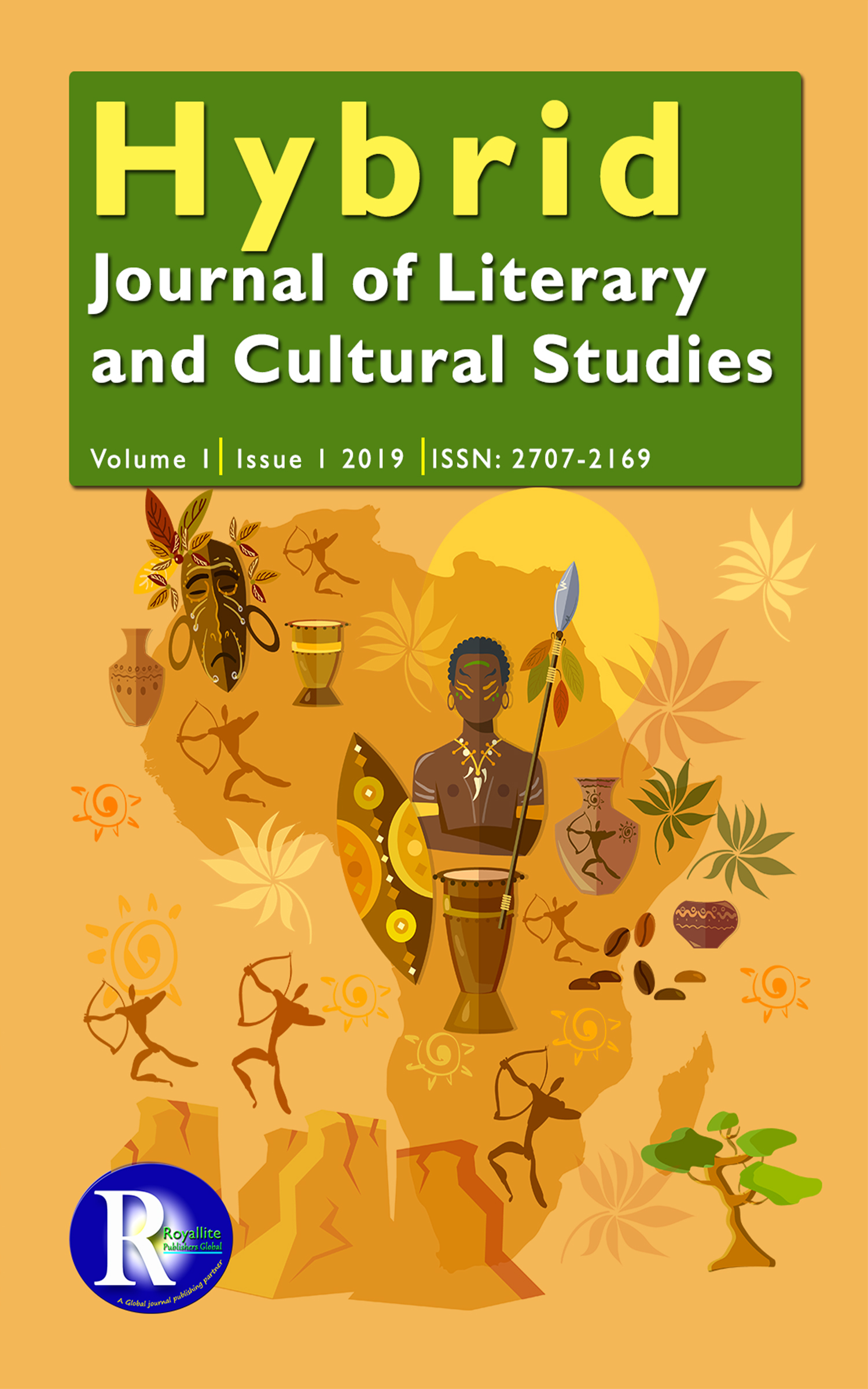‘What a man can do, a woman can do better’: Unmasking gender stereotypes and culture in ‘Coming 2 America’
Main Article Content
Abstract
This study investigates how gender is constructed in Eddie Murphy’s 2021 film ‘Coming 2 America’, the purpose of which is to unearth whether or not characters are projected stereotypically by assigning ‘male roles’ only to male characters and ‘female roles’ only to female characters. ‘Coming 2 America’ is chosen for this study because of its popularity and its being a most current film released in a COVID-19 world of 2021. Four major female and three major male characters are purposively sampled for the study. These characters are among the most prominent whose presence is felt throughout the film. Employing the literary process of characterisation, explicit and implicit ways these characters project themselves are analysed with gender construction as the focus. Findings reveal that gender construction in ‘Coming 2 America’ does not project characters stereotypically by assigning only ‘masculine’ roles and traits to male characters nor ‘feminine’ roles and traits to female characters. The study has implications for film industries, drama groups and social media content producers such as YouTubers and TikTokers to be cognisant of their consciousness or lack thereof as their construction of gender can contribute to the gender equality struggle or defeat it.
Downloads
Article Details

This work is licensed under a Creative Commons Attribution-NonCommercial-ShareAlike 4.0 International License.
This open-access article is distributed under a Creative Commons Attribution (CC-BY-NC-SA) license.
You are free to: Share — copy and redistribute the material in any medium or format. Adapt — remix, transform, and build upon the material for any purpose, even commercially. The licensor cannot revoke these freedoms as long as you follow the license terms.
Under the following terms: Attribution — You must give appropriate credit, provide a link to the license, and indicate if changes were made. You may do so in any reasonable manner, but not in any way that suggests the licensor endorses you or your use.
No additional restrictions: You may not apply legal terms or technological measures that legally restrict others from doing anything the license permits.
How to Cite
References
Ariyani, L. D., & Khamidan, F. (2022). Marginalization of Female Character under Patriarchal System in Craig Brewers’s Coming 2 America (2021). Metaphor, 4(2), 1-22.
Batool, S., Naeem, M., & Batool, F. (2017). Gender Construction and Media Narratives: Representations of Gender in Animated Films. Pakistan Journal of Gender Studies, 15(1), 199-212.
Benshoff, H. M., & Griffin, S. (2021). America on film: Representing race, class, gender, and sexuality at the films. John Wiley & Sons.
Bonsu, S. K., & Godefroit-Winkel, D. (2021). Representing Africa in the ‘Coming to America’Films. Markets, Globalization & Development Review, 6(1), 4, 1-9.
Bowles, T. (2021). When We See Us: Coming 2 America and the Intricacies of Black Representation and Diasporic Conversation. Markets, Globalization & Development Review, 6(1), 1-10.
Childs, P., & Fowler, R. (2006). The Routledge dictionary of literary terms. Routledge.
Hine, B., England, D., Lopreore, K., Skora Horgan, E., & Hartwell, L. (2018). The rise of the androgynous princess: Examining representations of gender in prince and princess characters of Disney films released 2009–2016. Social Sciences, 7(12), 245.
Iranmanesh, A., & Darani, L. H. (2018). Effects of films and gender on learning English idiomatic and everyday expressions among Iranian EFL learners. MOJES: Malaysian Online Journal of Educational Sciences, 6(3), 1-11.
Justice, B. (2014). Maleficent reborn: Disney’s fairytale view of gender reaches puberty. Social Education, 78(4), 194-198.
Martin, K. A., & Kazyak, E. (2009). Hetero-romantic love and heterosexiness in children’s G-rated films. Gender & Society, 23(3), 315-336.
Phillips, S. P. (2005). Defining and measuring gender: a social determinant of health whose time has come. International journal for equity in health, 4(1), 1-4.
Ramakrishna, A., Malandrakis, N., Staruk, E., & Narayanan, S. (2015, September). A quantitative analysis of gender differences in films using psycholinguistic normatives. In Proceedings of the 2015 Conference on Empirical Methods in Natural Language Processing (pp. 1996-2001).
Schwarz, D. R. (1990). Character and characterization: An inquiry. In The Case for a Humanistic Poetics (pp. 65-104). Palgrave Macmillan, London.
Sharma, D., & Malhotra, I. (2018). Deconstructing Gender Binaries: Representations in Select Bollywood Films. Language in India, 18(4), 49-64.
Sheikh, A. R., Sheikh, F. R., Khan, S., & Rashid, A. (2019). Discursive Construction of New Female Identity in Latest Hollywood Blockbuster Films. International Journal of English Linguistics, 10(1), 265-276.
Steyer, I. (2014), «Gender representations in children›s media and their influence», Campus-Wide Information Systems, 31(2), 171-180.
Subrahmanian, R. (2005). Gender equality in education: Definitions and measurements. International Journal of Educational Development, 25(4), 395-407.
Sultan, R. S., & Masood, F. B. (2020). Portrayals of Love, Romance & Sexuality in Animated Films for Children A Content Analysis of Animated Films Released in 2018. Journal of Mass Communication Department, Dept of Mass Communication, University of Karachi, 23.
Tello Díaz, L. (2021). From “woman in jeopardy” to COVID-19 lockdown: the gender gap in TV films aired on Spanish generalist television (2005-2020). Feminist Media Studies, 1-23.
Tsotsou, V., & Stamou, A. (2018). Sociolinguistic representations of Gender in Children’s Cartoon Films in the past and the Present. Multilingual Academic Journal of Education and Social Sciences, 6(IKEEART-2018-1181), 76-93.






